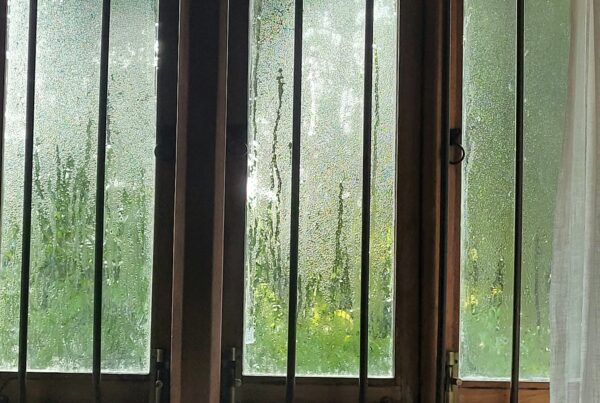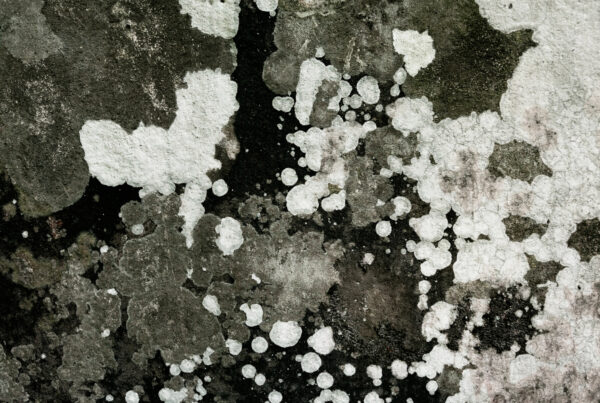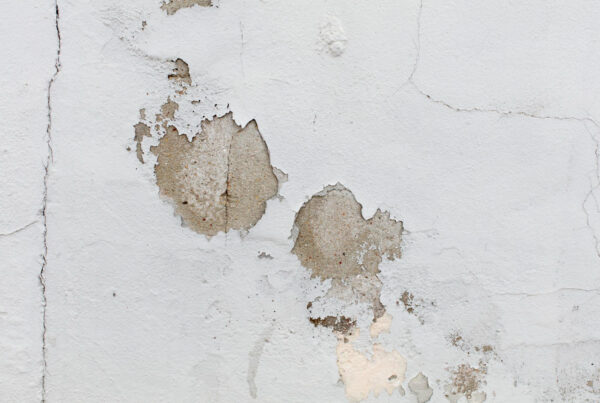That unmistakable musty, earthy odour in your home signals something more than just an unpleasant smell—it could indicate active moisture problems that could damage your property and affect your health. Dampness smell develops from specific moisture sources, creating the ideal conditions for mould and mildew growth, releasing spores and gases that produce characteristic odours.
Understanding what causes these smells, identifying their sources, learning effective removal methods, and knowing when professional help is necessary can help you tackle the problem effectively before structural damage occurs.
Why Does Dampness Create a Distinctive Smell?
Dampness smell results from microbial volatile organic compounds (MVOCs) released by mould, mildew, and bacteria that thrive in moist conditions. These microorganisms break down organic materials like wood, paper, fabric, and dust to produce gases that create the musty odour associated with damp problems.
The smell intensifies as moisture levels increase because higher humidity accelerates microbial growth. Even before visible mould appears, these organisms release MVOCs that your nose detects as a characteristic damp smell. The stronger the odour, the more advanced the moisture problem.
Different moisture sources produce distinct odours. Rising damp creates an earthy, soil-like smell, while condensation produces a sweeter, stale odour. Recognising these differences matters in identifying the underlying cause of your dampness problem.
7 Common Reasons for Damp Smells in Your Home
Dampness issues come down to one or a combination of these reasons.
1. Rising damp from failed damp-proof courses
Rising damp occurs when groundwater moves upward through walls via capillary action, often affecting ground-floor walls up to one metre high. Failed or missing damp proof courses allow moisture to penetrate masonry, creating persistent musty odours along skirting boards. Our rising damp specialists at Refresh identify tell-tale tide marks and salt deposits accompanying this distinctive smell.
2. Penetrating damp through external walls
Water ingress through external walls creates localised damp patches with strong musty odours, especially after rainfall. Damaged pointing, cracked render, or porous brickwork allows rainwater to saturate internal walls. This damp smell often appears near windows, around chimneys, or on exposed exterior walls where weather damage has compromised the building envelope.
3. Condensation from poor ventilation
Inadequate ventilation traps humid air inside, causing condensation on cold surfaces like windows and external walls. This moisture creates conditions for black mould growth, producing a sweet, stale smell that is especially noticeable in bathrooms, kitchens, and bedrooms. Modern homes with improved insulation but poor ventilation frequently develop condensation-related odours.
4. Plumbing leaks behind walls and under floors
Hidden water leaks from pipes, radiators, or appliances also result in persistent damp conditions, producing strong musty smells before visible damage appears. These leaks saturate building materials slowly, allowing mould to establish in wall cavities, under floorboards, or behind kitchen units, where the smell becomes trapped.
5. Roof leaks and damaged guttering
Water ingress from damaged roof tiles, blocked gutters, or faulty flashing creates damp conditions in lofts and upper-floor ceilings. The musty smell appears in specific areas during rainfall, accompanied by water stains or peeling paint. Poor loft ventilation amplifies these odours as trapped moisture encourages mould growth.
6. Basement and cellar moisture problems
Underground spaces naturally attract moisture through walls and floors, creating persistent damp smells that permeate throughout your home. Basements develop strong earthy odours from groundwater seepage without adequate waterproofing, often accompanied by visible efflorescence on walls.
7. Previous water damage that hasn’t properly dried
Flooding, burst pipes, or major leaks that weren’t thoroughly dried leave residual moisture within building materials. This hidden dampness continues producing musty smells long after the initial incident, as trapped moisture sustains mould growth in inaccessible areas.
How to Identify the Source of Dampness Smell
Locating the exact source requires thorough investigation. Start by following your nose; the smell grows stronger near the moisture source. Check areas where water naturally accumulates: bathrooms, kitchens, basements, and external walls.
Visual inspection techniques
Look for physical signs accompanying the smell: water stains, peeling wallpaper, bubbling paint, or visible mould growth. Use a torch to inspect dark corners, behind furniture, and under sinks. Check external walls during rainfall to spot water ingress points.
Using moisture meters
Professional moisture meters detect elevated levels before visible damage appears. Readings above 15% in timber or 5% in masonry indicate problem areas. Regular monitoring tracks whether dampness problems are improving or worsening.
Professional damp surveys
When DIY investigation fails, professional damp surveys use thermal imaging, salt analysis, and invasive moisture readings to identify hidden problems. Our penetrating damp solutions provide comprehensive surveys that pinpoint exact moisture sources and recommend targeted solutions.
Effective Methods to Remove Damp Smells
Eliminating dampness smell requires addressing both the odour and its underlying cause. Temporary solutions mask the problem without solving it, leading to recurring smells and structural damage.
Immediate odour reduction
- Open windows daily to improve air circulation and reduce humidity.
- Use dehumidifiers to extract excess moisture, emptying them regularly.
- Place moisture-absorbing products like silica gel near problem areas.
- Clean surfaces with white vinegar solution (equal parts vinegar and water).
- Sprinkle baking soda on carpets overnight before vacuuming.
- Avoid bleach products that merely mask smells without addressing causes.
Long-term solutions
- Fix moisture sources – repair leaks, improve ventilation, install damp proofing.
- Replace water-damaged materials harbouring mould spores.
- Seal walls with anti-mould paint after treating underlying dampness.
- Install extractor fans in bathrooms and kitchens.
- Consider positive input ventilation systems for whole-house moisture control.
- Maintain consistent heating to prevent condensation on cold surfaces.
When Should You Seek Professional Help for Damp Smells?
Professional intervention is recommended when damp smells persist despite DIY efforts, spread to multiple rooms, or accompany visible structural damage. Strong, widespread odours indicate serious moisture problems needing expert diagnosis.
Recurring smells after attempted fixes suggest unidentified moisture sources or inadequate treatment. Black mould growth, rotting timber, or crumbling plaster indicate advanced dampness requiring specialist remediation. Multiple affected areas point to systemic moisture problems beyond DIY capabilities.
Property protection benefits
Early professional intervention prevents expensive structural repairs and satisfies insurance requirements. Certified damp treatment provides documentation for property sales and mortgage applications. Professional guarantees offer long-term protection against recurring problems.
Get Rid of Dampness Smells with Expert Solutions From Refresh
Our damp proofing specialists at Refresh Property Services and Consultants have over 30 years’ experience identifying and resolving moisture problems causing unpleasant odours in London homes.
Our comprehensive approach combines thorough moisture assessment, targeted treatment solutions, and preventive strategies that remove dampness and unpleasant smells. As registered installers for leading waterproofing systems and Trustmark-endorsed specialists, we offer guaranteed solutions to your damp and odour problems.
Contact our team today for a professional dampness assessment and effective odour removal.



